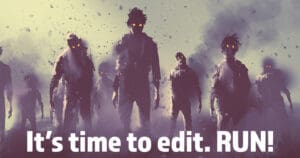Like a history class, I thought that World Mythology might be a great source of inspiration for my own stories. Where HIS-200 failed to be engaging, I did find World Mythology to be interesting, a bit challenging, and even fun.
About LIT-229
The workload isn't too burdensome. There are four discussions, four journals, and five quizzes. The final project is broken up into three milestones, all of which the student may combine into the week seven submission. Oddly, the first milestone is a discussion, so it's almost more like five discussions and two milestones. I appreciate any class that makes the final project part of the curriculum from week one, as this one does.
I also appreciate that the material in LIT-229 was far more than just learning the names of the Greek and Roman gods. This course is more about the concept of mythology than the myths themselves. We learned how myths begin and how they spread, and we read theories from Jung and Campbell. The course devotes a week to gender archetypes in myth and another week to heroic myths. I found the connections between ancient myths and modern society fascinating.
The following is the only feedback I felt I needed to share with the school.
It was a great class, don't change a thing. I especially like the textbook, and I'm happy that I decided to buy the print version so that I can keep it as a reference.
Maybe I've just been lucky, but I have yet to run into a bad instructor. Aimee Ford was my professor for LIT-229, and she was great. I emailed her twice during the term and received friendly, professional replies. Professor Ford's announcements were frequent and helpful, and she made the discussions interesting.
The Textbook
Introduction to Mythology: Contemporary Approaches to Classical and World Myths by Eva M. Thury and Margaret K. Devinney is the book. I'm happy that I bought the print version. Unlike books in previous terms, I ordered this one from Amazon for $90. Unfortunately, I can't see what the school bookstore charges because I can't look up materials from previous terms. The price was, I believe, close to the school bookstore's price at the time, but I wanted it fast and free. (And I get 5% back when I use my Amazon credit card).
I decided on print after polling students on Facebook. As I get further into the degree program, I wonder if any of the books would be useful after I earn the degree. Reviews for this one were positive and having used it now, I can see why. It's easy to read, well organized, and it will be a great resource for the type of stories I'll write after graduation.
The Final Project
I'm mildly satisfied with what I wrote here. The assignment a paper centered around an archetype in mythology. I chose the trickster archetype partly because I'm working on a series of stories about a trickster—not Loki. In fact, I went out of my way to avoid writing about Loki. Instead, I chose Anansi and Coyote from the African and Native American traditions.
I had a few points knocked off in the rubric; Professor Ford would have liked to see a bit more development in two areas. Still, the paper came back with at 97.9% so no complaints.
Advice for Students Registering for LIT-229 at SNHU
- Challenge yourself. Sure, your final project can be about the Greek and Roman gods you've known about all your life. Try something different.
- You're probably a writer if you're taking this course. Buy the print book. It looks nice on a shelf, it's easy to use, and most importantly, it's an excellent resource. School ebooks go away eventually. You'll use this for years to come.
- The course includes a PDF of mythology terms. I didn't think it was useful until it came to the final project. Still, make sure you have a good understanding of the more common words until you find you need the others.
- Go watch Crash Course: Mythology if you haven't done anything with mythology since high school. It's a fun series that lays down the basics and shares some great stories. And it uses this course's textbook (among others) as a resource!
- Myths, legends, fairy tales, and folk tales are all different things. You'll get into it in class, but always keep this in mind as you're reading. When it comes to your assignments, and especially your final project, you'll want to use myths specifically.
In the End
The research was challenging and the reading wasn't always easy, but I thoroughly enjoyed the class. Much of what we do as writers has roots in mythology and it was great fun to explore some of that.
In her introductory announcement, Professor Ford asked us if we had any concerns. This was my response:
I don’t believe I have concerns to start off with, but this will be the first term at SNHU that I feel will be challenging for me. I don’t have a grade lower than 99 in any class so far, but World Mythology and Context of Writing together look to be pretty dense, so we’ll see how it goes!
Final Grade: A (98.6%). So, yeah, it went fine.
Next week I'll be recapping LIT-319: Shakespeare. I've almost caught up to the present with these recaps. As I write this, today is the final day of that course.






